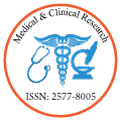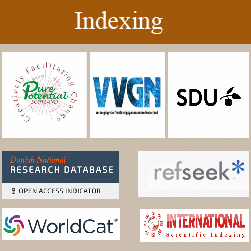Evaluation of Interleukin-1β, Interleukin-6 and Interleukin-10 Profiles in Serum and Surgically Created Wound Exudates of Alloxan-Induced Diabetic Rabbits
Author(s):
Jonas A. Onah, Samuel T. Fadason, Ebenezer O. Abidoye, Kwem B. Kadima, Muhyideen A. Kelani, Chekwube N. Ifeadi and Ramon-Yusuf Suleiman Babatunde
The knowledge of immune-modulatory actions of interleukins could be of immense value in the management of diabetic wounds. This study evaluated the interleukin profiles of diabetic wounded rabbits. Sixteen New Zealand White rabbits of mean weight 2.5 ± 0.7 kg used for this study were divided into four groups; A, B, C and D, of four rabbits each; A (non-diabetic and non-wounded) as control, B (diabetic and non-wounded, C (wounded and non-diabetic) and D (wounded and diabetic). Three (3) cm2 skin wounds were created in a standard aseptic procedure while diabetes was induced by administration of alloxan monohydrate. Serum and wound exudate were harvested on days 0, 3, 7, 14, 21 and 28 for Interleukin-1β, Interleukine-6 and Interleukine-10 assays. The increases in the serum concentration of Interleukin-1β and Interleukine-6 in the C rabbit group between days 3 and 7 (Interleukin-1β) and between days 3 and 28 (Interleukine-6) were relatively higher than the corresponding day 0 and control values. The decrease in the serum concentration of IL-10 (ng /mL) in B rabbit group from days 7 (36.96 ± 8.7) to 14 (128.12 ± 12.05) were significantly lower (P�?0.05) than the corresponding values ingroups A and C rabbits. The values of Interleukine-10 in wound exudate of C rabbit group from days 7 (160.57 ± 23.76 ng /mL) to 21 (177.30 ± 8.60 ng /mL) were significantly higher (P<0.05) than the corresponding group D values. The evidence shows that, the values of Interleukin-1β and Interleukine-6 are up regulated in the inflammatory phase of wound healing in normoglycaemic and diabetic rabbits while the values of Interleukine-10 is down regulated during wound healing in diabetic rabbits. Therefore, the knowledge of interleukin markers shall be of significant roles in proffering solution for management of normoglycaemic and diabetic wounds.



